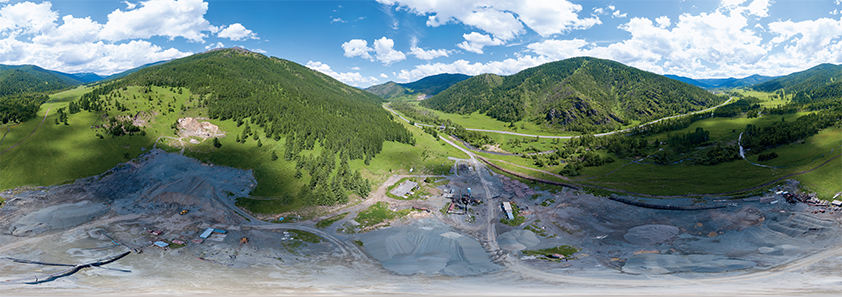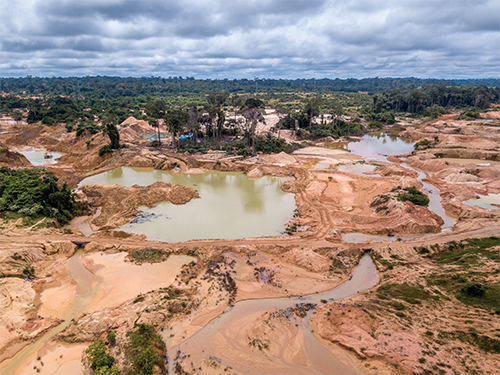
Time to get radical
Mining companies are increasingly describing themselves in solutions-oriented terms – ‘green mining’, ‘climate-smart mining’, producers of ‘future-enabling products’, etc. – thereby tackling head-on the age-old branding challenge of the industry. While there is indeed an undeniable need for more commodities to support the global energy transition, this positive labelling is difficult to reconcile with the continued stream of high-profile controversies seen across the industry, from tailings dam failures and toxic spills to human rights violations and fatal accidents.
So between the positive branding and the negative impacts, where is the industry actually at on responsible practices? How close are we to be able to talk about responsible mining as a reality?
Going in the right direction
Our research on the ESG policies and practices of some of the world’s largest mining companies shows that they are moving in the right direction. The 40 companies assessed in the RMI Report 2022 show an average increase of 11 percent over their results in the previous assessment in 2020.
It is encouraging to see the most notable improvements coming from among the lower performing companies – those that had previously shown less evidence of taking ESG seriously. Companies in the lower third of the performance spectrum have improved their results by 41 percent on average, reflecting the fact that they have now put in place policies and practices on a range of ESG issues, while increasing their transparency. This includes for example establishing formal commitments to respect human rights and prevent bribery and corruption, improving accountability for ESG performance, conducting due diligence on ESG supply chain risks, and publicly disclosing payments to governments and workplace safety incidents.
On the other hand, companies that have been leading on ESG issues now seem to be slowing down somewhat. The top-tier performers show an average increase of only eight percent suggesting a risk that their momentum is stalling. And importantly, it is not just that they have reached a plateau with only the more demanding issues unaddressed. Rather, the remaining gaps in leading companies’ ESG measures span a wide range of key issues.
To put these improvements into perspective, all of the companies still have a long way to go to reach the expectations of society on responsible mining (the basis for the benchmark we use). Even the best-performing company scores less than 60 percent across all ESG issues.
Proving it can be done
Perhaps one of the most important findings we see in our research is that companies are collectively proving that responsible mining is possible. In fact, if we look at the best results seen on each indicator (no matter which company achieved them), they add up to an overall score of some 73 percent. This shows two things. First, society expectations on responsible mining are not an unreasonable ask – responsible mining is not an impossible task. Second, there is much scope for companies to improve their responsible practices by adopting the good examples already shown by their peers.
 It is time to go beyond compliance
It is time to go beyond compliance
External requirements certainly make a difference to company practices. Where companies or mining operations are subject to, for example, legislation, regulation, or the requirements of investors or industry bodies on particular issues, they tend to perform better than other companies. We have seen this impact on practices such as conducting human rights due diligence, providing women workers with appropriate PPE, reporting on environmental impacts, and disclosing payments to governments.
While this response clearly shows the value of such requirements, they are not sufficient to stimulate responsible mining on a wide scale. We have noted two key limitations in this respect. First, challenges in effective enforcement of laws or regulations mean that cases of non-compliance go unaddressed. Second, companies using a good practice where it is mandatory do not tend to use the same good practice elsewhere. In other words, companies’ response to requirements is often limited to a ‘compliance’ approach and does not extend to other situations where the requirements are not in place.
Beyond requirements, voluntary initiatives on responsible mining practices have become more common over the last decade. However, our research shows that standards or non-binding expectations or principles have little or no impact on company practices. And many of these initiatives have a limited scope, often omitting for example the need to publicly disclose mine-site-level disaggregated data or the need to assess and address negative impacts of mining on the health and wellbeing of men and women in affected communities. Many standards recently developed also focus on future projects and operations, leaving the critical issues of current and legacy mines completely unaddressed.
And demonstrate implementation at mine sites
While we see companies increasingly developing corporate systems – management standards, guidelines, etc. – on ESG issues, there is very little correlation between the existence of these systems and the evidence of mine site action on these same issues. For example, most companies show some level of corporate protocols for their operations to engage with other water users on water management and to engage with worker representatives on occupational health and safety. However only a minority of the 250 assessed mine sites show any evidence of having implemented these requirements. This lack of mine site action has been a key finding since we began our assessments in 2016. Without evidence that corporate systems are being implemented at mine-site level, the credibility of these systems will be limited.
Normalizing responsible mining: what will make it happen?
Mining companies know what needs to be done to achieve responsible mining. There is now plenty of guidance and good practice models to support continuous improvement efforts. And companies are now certainly aware of the business case for robust action, as evidenced by the ranking of environmental and social risks as the number one concern of mining executives in EY’s latest report on the sector. What is needed is courageous leadership by companies and by industry associations to accelerate progress towards the normalization of responsible mining. This will mean, among other moves, providing Sustainability departments with the budgets, people, agency and respect within companies to ensure effective management of ESG issues. And assigning responsibility for ESG performance at the C-suite level. It is now high time for a more radical response to prevent harm, limit risk and build trust in this very important industry.
THE RESPONSIBLE MINING FOUNDATION
The Responsible Mining Foundation (RMF) is an independent research organization that encourages continuous improvement in responsible extractives across the industry by developing tools and frameworks, sharing public-interest data and enabling informed and constructive engagement between extractive companies and other stakeholders. The Foundation does not accept funding or other contributions from the extractives sector.
For further information please visit: https://www.responsibleminingfoundation.org